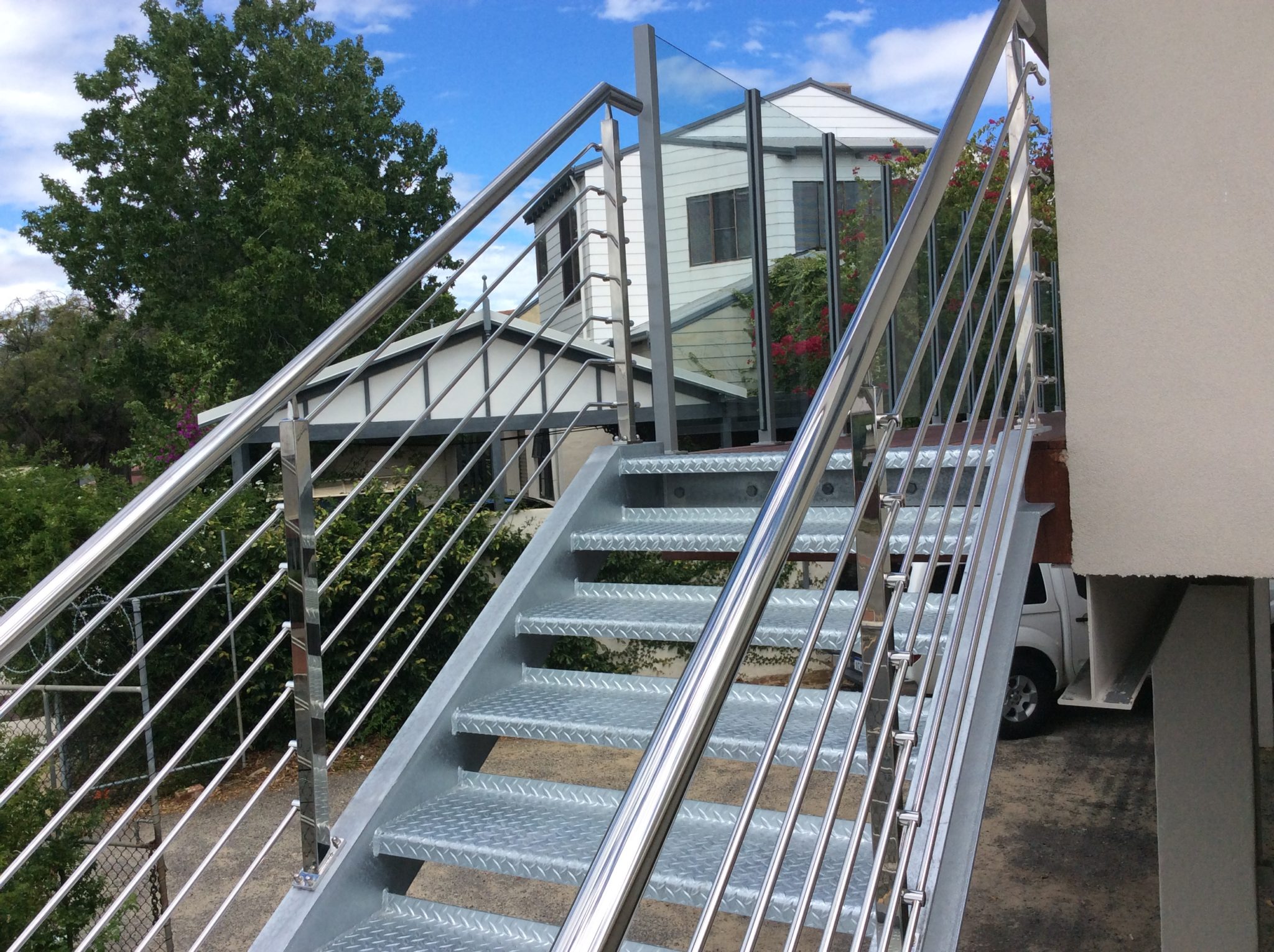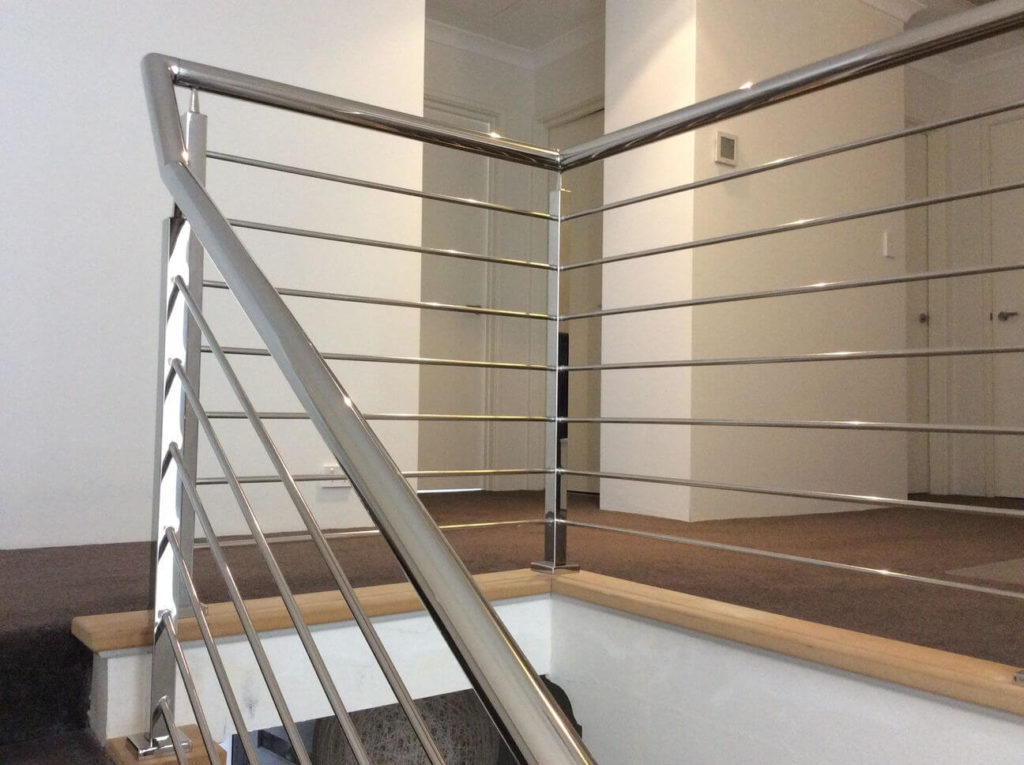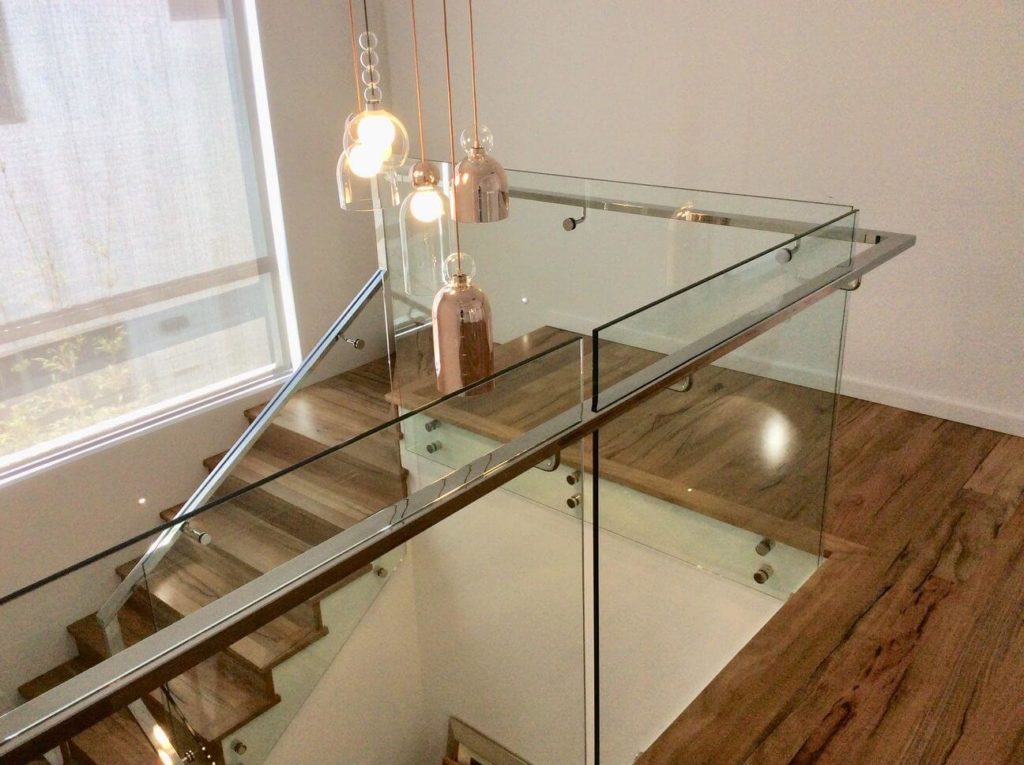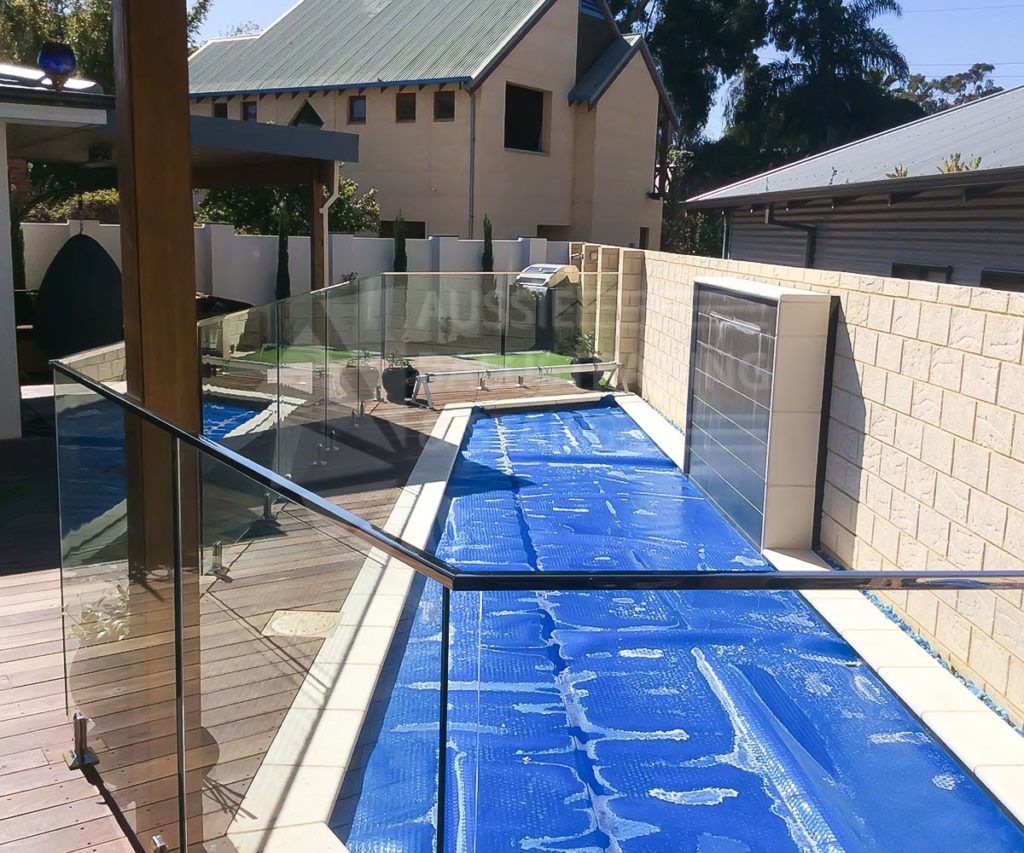Selecting which grade of steel to use in your wire railing for your stairs can get confusing. More often than not, your manufacturer or provider will ask you to choose between the following types: 316 Marine Grade Stainless Steel or 304 Grade Stainless Steel. The former costs a little bit more than the latter, but it does offer some advantages.
What is 316 Marine Grade Stainless Steel, and how is it used?
Grade 316 is an alloy of stainless steel that melts at temperatures ranging from 1371 degrees Celsius to 1399 degrees Celsius. It is what is known as an austenitic stainless steel alloy, which means that it is incredibly strong (with a tensile strength of 84 ksi), very resistant to corrosion, and has high concentrations of chromium and nickel. It also has a maximum use temperature of around 800 degrees Celsius.
It also features molybdenum in its formulation, giving it greater resistance to acids, bases, and chloride pitting.
Some common uses of this grade of steel are:
- Stainless steel baskets
- Marine parts
- Outdoor electrical enclosures
- Medical-surgical instruments
- Pharmaceutical equipment
- Chemistry equipment
- And stainless steel balustrading
How is it different from 304 Stainless Steel?
It is quite difficult to tell the difference between these grades of stainless steel at a glance. Visually speaking, they look identical. The differences are in their physical and chemical properties.
The melting point of 304 Grade Stainless Steel is in a higher range than its sibling, at 1399 degrees Celsius to 1454 degrees Celsius. However, one particular quality of this 304 stainless steel is that it loses tensile strength as it gets closer to its melting point. That said, this type of stainless steel is stronger than 316 Marine Grade. Its tensile strength registers at 90 ksi.
Chemically speaking, it possesses a greater percentage of chromium, but a slightly smaller fraction of nickel. Small amounts of carbon and manganese are also introduced into the alloy, making it more resistant to oxidation. That widens its range of uses since it is easily cleaned and sanitized.
Some of the more common uses of it include:
- Auto mouldings and trim
- Wheel covers
- Storage tanks
- Electrical enclosures
- Kitchen equipment and appliances
One caveat to the use of this steel is that it is susceptible to pitting, and it can experience localized corrosion if exposed to high levels of chloride and saline environments. Even a chloride solution of 25 parts-per-million can lead to corrosion.
A great benefit of this type of steel is that it costs less than 316 Marine Grade Stainless Steel.
Which should I choose?
It depends on your needs. If you expect to use the steel in a high-chloride or high-saline environment, such as steel staircases in residences close to the sea or near a pool, you will benefit better from 316 Marine Grade Steel. It will last many times longer than 304 Grade Stainless Steel in such situations, giving you more for your investment.
If acid and salt exposure isn’t a concern, the 304 Grade Stainless Steel should work just as well.
In conclusion
To answer the question of whether one grade is better than the other: yes and no. It really depends on what you need and where you are.
When thinking about your balustrading, it is crucial to carefully consider what materials to use with regard to your needs. That way, you can make an informed decision about whether you want or need to invest in greater versatility or greater strength. Whatever you choose, make sure it is the right one for you.
If you need a Perth-based supplier of stainless steel wire railings and balustrading, send us a message at Aussie Balustrading. We provide high-quality service on top of high-quality materials.




